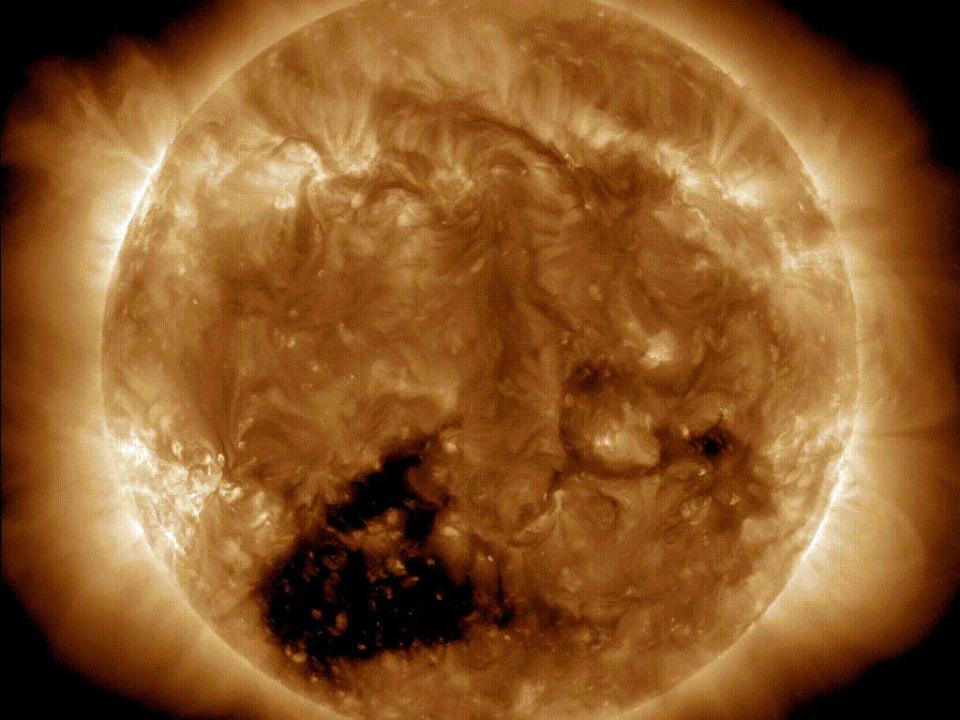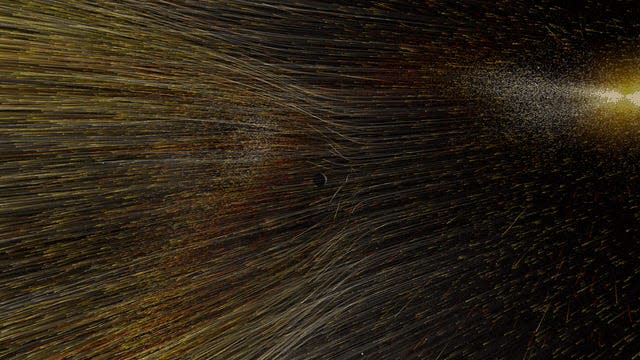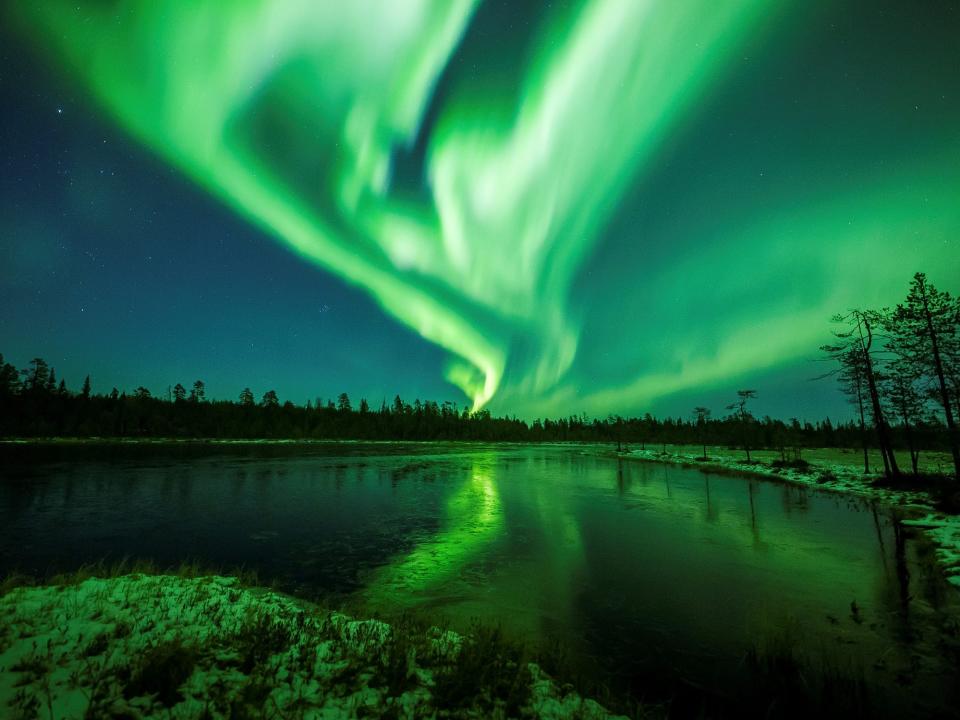A 'hole' 30 times Earth's size has spread across the sun, blasting solar winds that'll hit our planet by end of this week

The sun is sporting a giant coronal hole that could fit 20-30 Earths across, back-to-back.
Coronal holes blast rapid solar winds into space that travel 500-800 kilometers per second.
The winds are relatively harmless and should reach Earth by Friday for a more stunning aurora.
A giant, black region of the sun — called a coronal hole — was spotted on Monday by NASA's Solar Dynamics Observatory.
Despite the name, however, this isn't a physical hole in the solar surface; coronal holes are cooler in temperature, so they don't glow as bright as other areas of the sun and therefore look black.
"The current coronal hole, the big one right now, is about 300,000 to 400,000 kilometers across," Alex Young, the associate director for science at NASA Goddard's Heliophysics Science Division, told Insider over email. "That is about 20-30 Earths lined up back-to-back."

Coronal holes are common; there is "nothing unusual here," Scott McIntosh, a solar physicist and the deputy director of the National Center for Atmospheric Research, told Insider in an email.
Holes like this are part of the sun's normal activity, but McIntosh said that they are "not well understood" and called these events "the 'dark side' of solar activity."
Coronal holes are the source of rapid solar winds, which reach speeds of about 500-800 km per second, Young wrote. The solar winds from this coronal hole are scheduled to reach Earth by the end of this week.

"We will probably start seeing the effects of the high-speed wind on March 24," Young added. "When the high-speed wind reaches Earth, the particles and the magnetic field it carries will interact with Earth's magnetic field, effectively rattling it or like ringing a bell."
More powerful magnetic fields, like from a coronal mass ejection, could cause electrical blackouts or disrupt communication technology. But coronal holes — even large ones like this — are far less violent. So the main effect to look forward to this Friday is a more vibrant aurora borealis.

However, we are entering a new phase of increasing solar activity where coronal holes will be less frequent, and coronal mass ejections and powerful solar flares will become more common, Young said.
That can be a concern since the powerful magnetic fields from coronal mass ejections and solar flares have been known to surge power grids and fry satellites — however, these events are infrequent.
Young said that for him and other solar scientists, "it's gonna get more and more exciting and interesting" as solar activity increases.
Read the original article on Business Insider

 Yahoo Finance
Yahoo Finance 